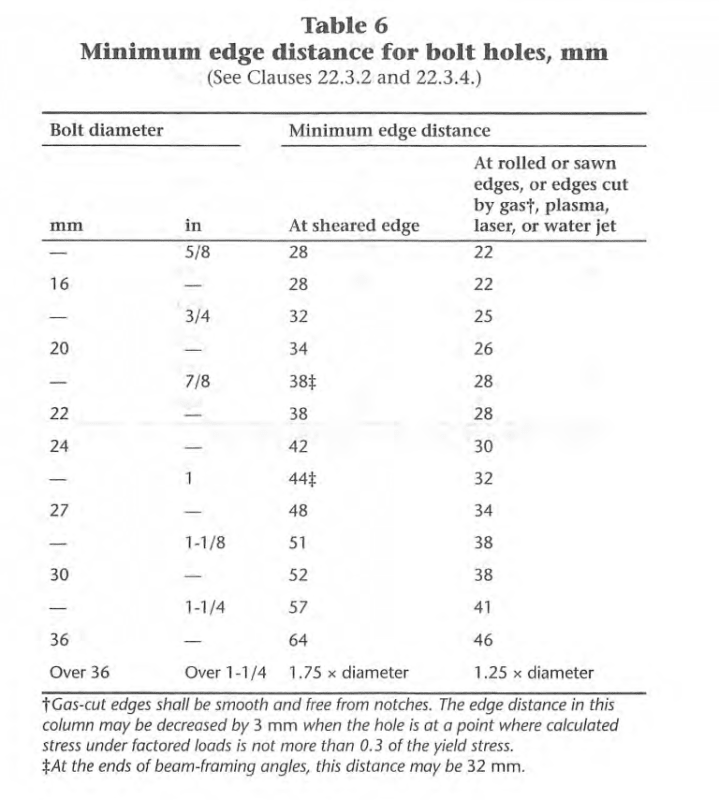Logan82
Structural
- May 5, 2021
- 212
Hi!
The minimum edge distance for bolt holes depend on the bolt diameter, but not the plate thickness.
- Why are these values independent of the plate thickness in this table?
- Were the minimum edge distances calculated for a certain plate thickness?
- How were the minimum edge distances obtained?

Source: CSA S16-09
The minimum edge distance for bolt holes depend on the bolt diameter, but not the plate thickness.
- Why are these values independent of the plate thickness in this table?
- Were the minimum edge distances calculated for a certain plate thickness?
- How were the minimum edge distances obtained?

Source: CSA S16-09
